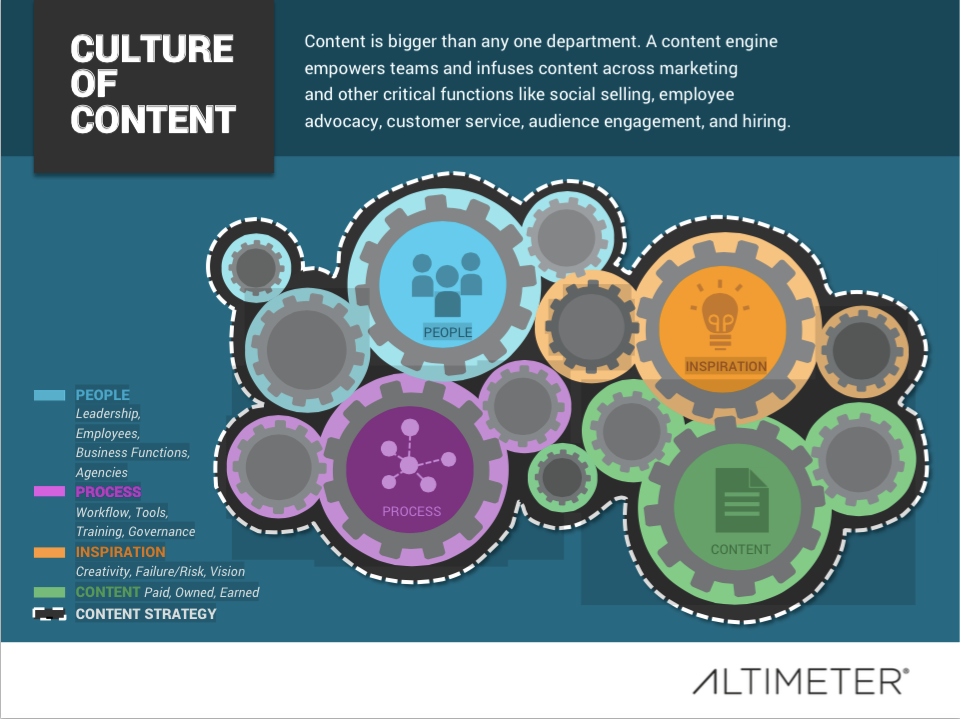
What goes into creating and fostering an organizational culture of content? As an analyst that’s the topic I’m currently researching.
Broadly speaking, organizations that have fostered a culture of content have spread the importance of content beyond the marketing organization. Content education, evangelization, creation and distribution flows upwards and downwards, from the C-suite to the shop floor. Marketing gets content flowing out into the organization, but also fosters a circulatory system in which various divisions across the enterprise: sales, recruiting, customer care, product groups, etc., are creating, inspiring and leveraging content to better fulfill their roles.
- People Beyond the content or the marketing staff, people are critical to this machine’s success. Leadership understands the value of content and fosters it. People across the organization are tapped for their ability to create content (this needn’t be complicated – it can be as simple as the occasional tweet, or capturing images with a cameraphone). They understand and can identify stories that can be turned into content by other creators in the company. People can also be outsiders: agency and vendor partners, for example.
- Process Process involves many tactical elements – it’s what gets content done. Tools, technology, workflow and governance documents are just part of what creates process. So are editorial calendars, editing guidelines, metrics and analytics, as well as well-defined roles and responsibilities. Process also involves training, education and evangelization.
- Inspiration Fostering a culture of content requires inspiration, as without inspiration there can be no creativity. A core requirement for inspiration is vision, which ladders out to goals and benchmarks. Inspiration is also an understanding of both the elements for content success, as well as risks and failures. But (as one of our interview subjects so eloquently puts it), “The biggest risk is not taking a risk at all.”
- Content The content engine begets content, but it also ingests and distributes it, creating a circulatory system of content that can be re-used, re-purposed and re-aligned across paid, owned and earned media channels and platforms. This engine helps content to beget content: creating more of what resonates, repurposing strong content into different channels and form factors, and distributing the right content to the right people across the organization.
No two content engines look exactly the same, but we believe this to be the overall schematic model.
Agree? Disagree? Let me know, and help contribute to this research.
This post originally published on iMedia

